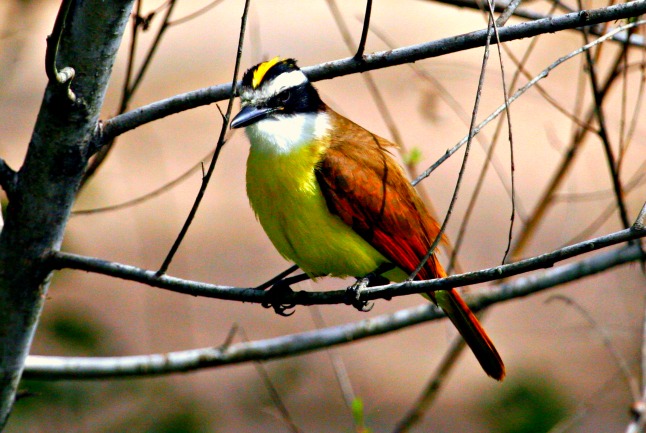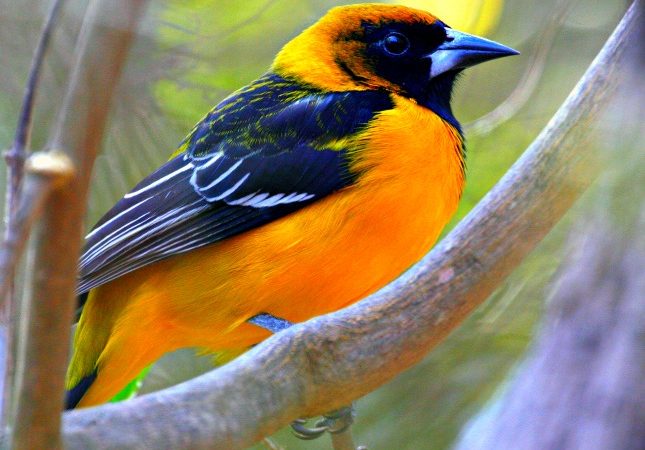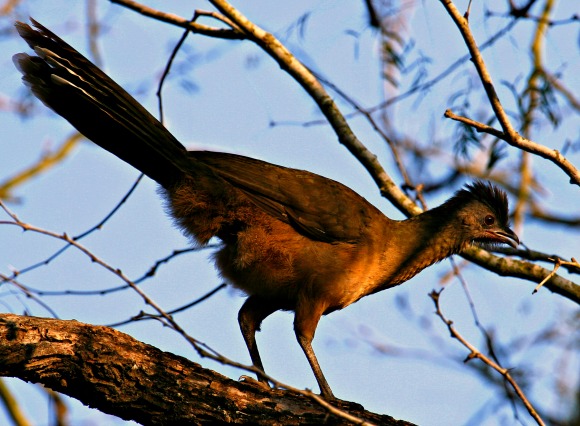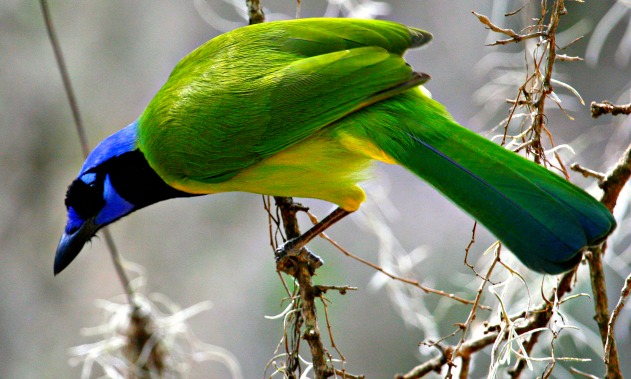A haven for birders and butterfly enthusiasts, Mission, Texas, is located about 250 miles south of San Antonio in the Rio Grande Valley.

Great Kiskadee © Rex Vogel, all rights reserved
Situated on the southernmost tip of Texas, this semi-tropical paradise is not really a valley but a delta or floodplain containing many oxbow lakes or resacas formed from meanders in earlier courses of the Rio Grande.
This unique region encompasses no fewer than 11 different types of habitat, from tidal wetlands to riparian forest, brushland scrub to prairie savanna, and is home to more than 1,200 different species of plants, 500 species of birds, 200 vertebrate species, roughly 300 species of butterflies, and over 90 species of dragonflies.
Mostly sunny skies, warm weather averaging 72 degrees, and zero chance of snow also attract thousands of Winter Texans to the numerous RV parks and resorts.

Altamira Oriole © Rex Vogel, all rights reserved
Founded in 1908, the City of Mission was named after the La Lomita Mission. It was in this area that citrus was first planted in the Rio Grande Valley. A multi-million-dollar business, the citrus industry is celebrated annually with a gala Citrus Fiesta.
Known as one of the top birding destinations in the country, Bentsen-Rio Grande Valley State Park is deserving of its status as headquarters of the World Birding Center.
The Rio Grande Valley area is a major bird migration corridor; the convergence of two major flyways (the Central and Mississippi) affords the birder an abundance of Northern migrating species and Southern Texas-only specialties.
Striking green jays with bright green backs, purple-blue heads, and yellowish-green under parts; radiant orange Altamira orioles; great kiskadee, an eye-catching mix of black, white, yellow, and reddish-brown; and raucous plain chachalacas are a few of the most common birds you’ll find at feeding stations around the park.

Plain Chachalaca © Rex Vogel, all rights reserved
And just as the Rio Grande Valley is the number one birding destination in the United States, it’s also among the best places to view butterflies.
Unlike various other butterfly conservatories, the National Butterfly Center provides extensive outdoor gardens of native plants as well as natural habitat to attract large numbers of wild butterflies and to conserve rare native butterflies.
More than 300 species of butterflies have been found in the Rio Grande Valley and over 200 of these have been seen at the National Butterfly Center.


